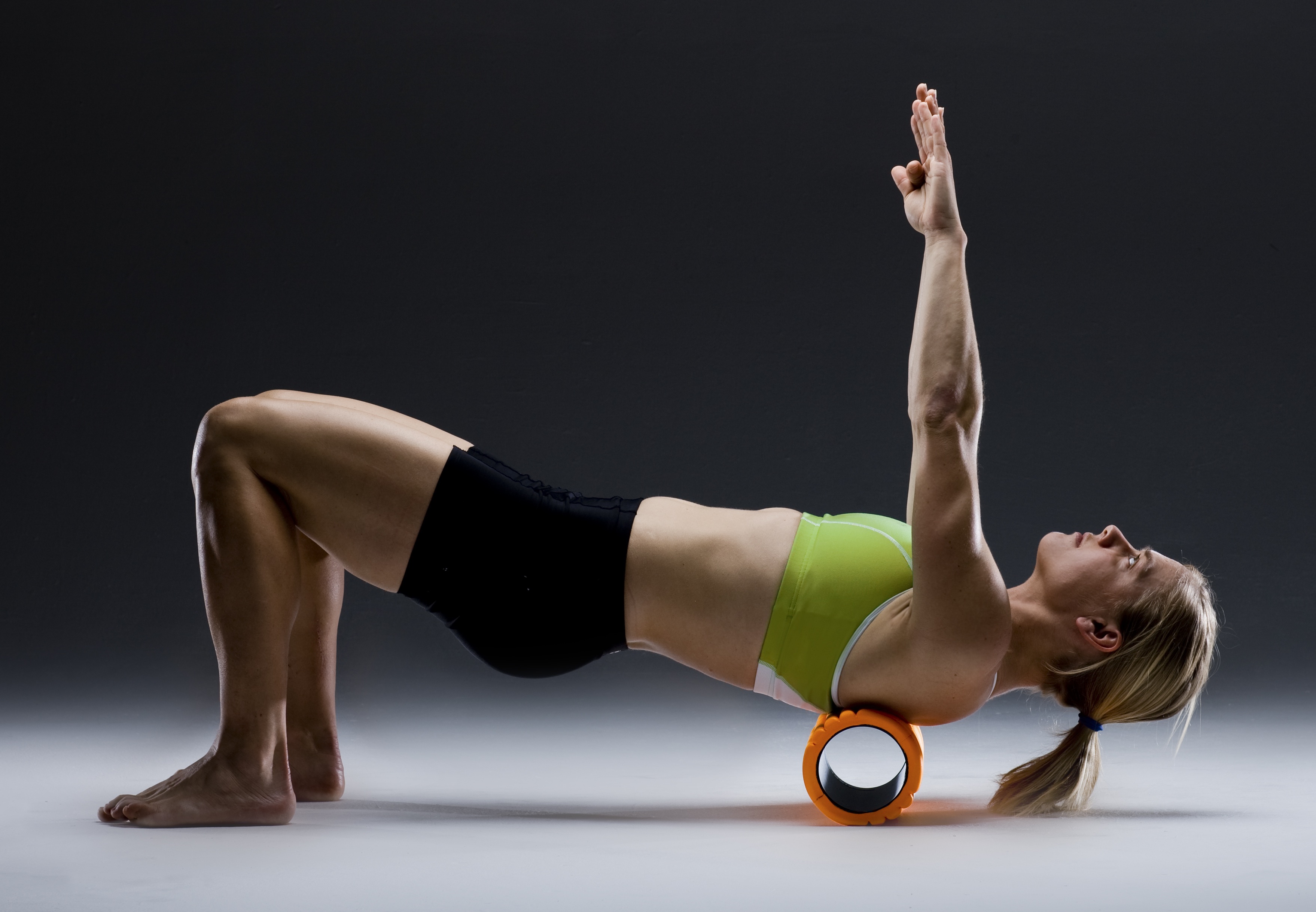
Posted in Blog, Injury Prevention, News, Rehabilitation, Running.
Foam Rolling 101: The Why & How to Do It
If you’re like most people, you have a love/hate relationship with the foam roller. You know it’s good for you, and you love how it feels-oh-so-good when it’s done … and yet, good grief is it a painful process getting there!
But why is it good for you? How does it really help? These are common questions we get. If there’s one thing that’s true, it’s that introducing a foam roller into your routine is one of the keys to taking your exercise to the next level.
Here’s what happens:
In general, tissues should translate (glide) relative to nearby tissues and bones. Tissues should be elastic like a bungee cord, where they stretch and spring back to their original shape. Inelastic tissues are like a rope, where the muscle loses its ability to lengthen and recoil with movement. Daily inactivity, overtraining, and lack of hydration can create adhesions (knots) in the muscle and fascia that affects your ability to function efficiently.
Most injuries occur when tissues are stressed faster than they can respond — usually because they are less hydrated and have a slower elastic response — which results in stagnation of fluid in the tissues. If an injury occurs, the fascia can bind down to tissues causing increased pressure on nerves, muscles, bones, and organs. The result? Pain and dysfunction. Releasing stagnation restores fluid flow and allows healing to occur.
Trigger point therapy, or self myofascial release (aka foam rolling – the process of using tools to massage targeted muscles and fascia), works to improve performance by restoring muscle elasticity and allowing tissues to rebound back to their natural state by increasing blood flow, increasing oxygen usage, and decreasing scar tissue and muscle adhesions.
Foam Rolling 101: The WHY & HOW to Do It
Foam rolling BEFORE exercise is used to:
- increase tissue tolerance to movement
- increase blood flow
- restore length-tension relationships and elasticity
- increase efficiency of movement
- increase force output of muscle contraction
- decrease heart rate
- prepare muscles to tolerate the upcoming demands of exercise
Foam rolling AFTER exercise is used to:
- flush tissues of toxins and promote blood flow
- re-establish length-tension relationships
- create pliability in muscles and relieve muscle tension
- speed up the recovery process and decrease DOMS (delayed onset muscle soreness)
- restore range of motion
- encourage circulation in dysfunctional tissues
Keys to foam rolling:
- Breath. Take deep slow breaths through the nose to increase oxygen uptake and improve circulation
- Stay Relaxed. It’s hard – we know! But the muscle group being released must stay relaxed to get the most out of rolling.
- Movement. After each technique, walk around to circulate more blood to the area.
Guidelines for foam rolling:
- Mild to intense discomfort is common when beginning foam rolling. This discomfort should decrease over time as the knots are worked out. Regularity in rolling is the key!
- Maintain an adequate amount of pressure on the muscles being rolled in order to gain the most benefits.
- Avoid placing the roller on any bony structures, neck joints, inside of upper arm, and any bruised areas of the body.
- Connect breathing to each movement on the foam roller and focus on complete inhales and exhales to maximize effects.
- Maintain good posture while rolling. Ensure core and shoulders are engaged.
- We recommend using the GRID foam roller to roll 1-3 minutes on each muscle group.
- Rolling techniques can (and should) be performed before and after exercise, but you should never roll more than 3x/day as this can damage soft tissue.
